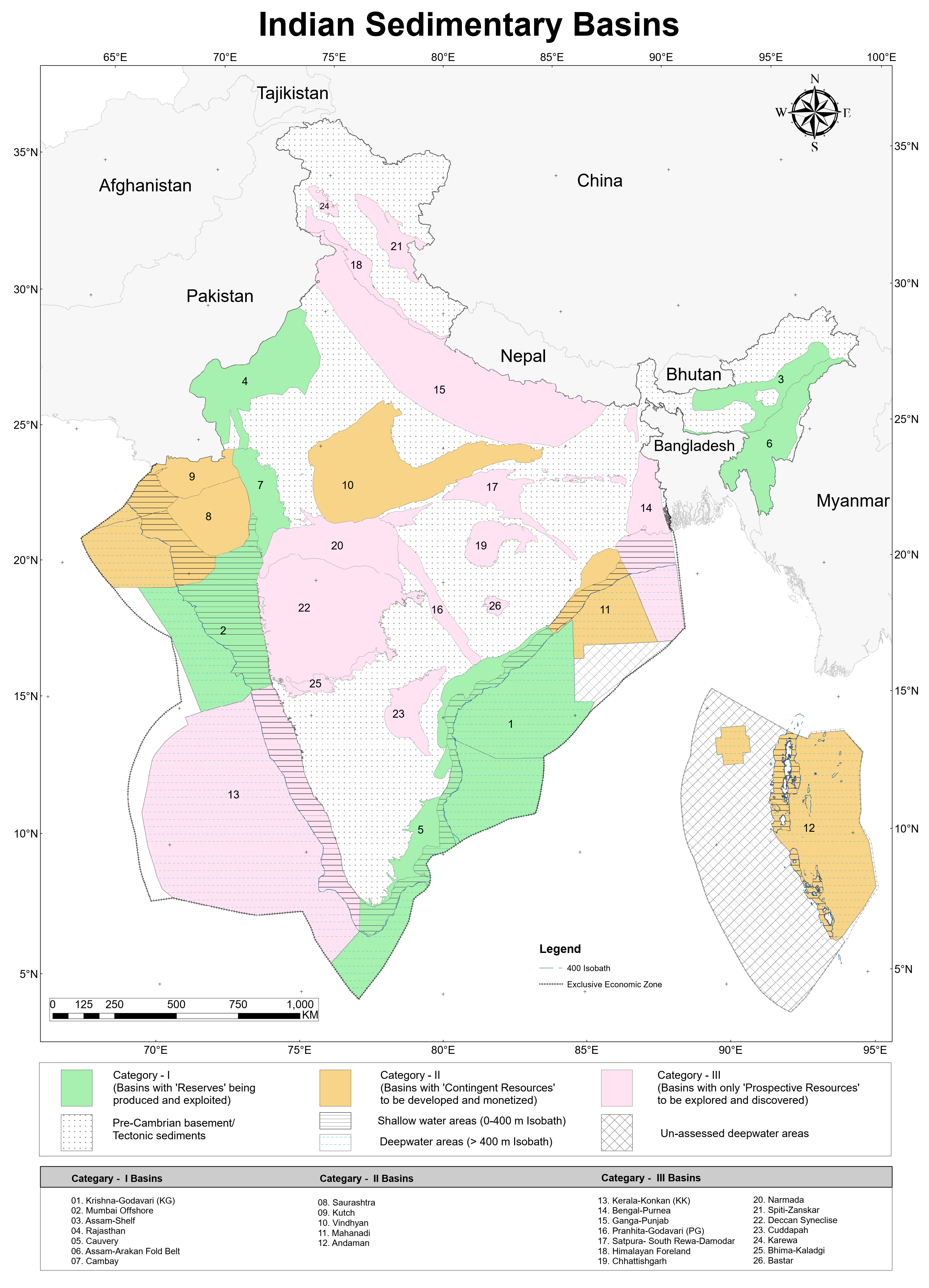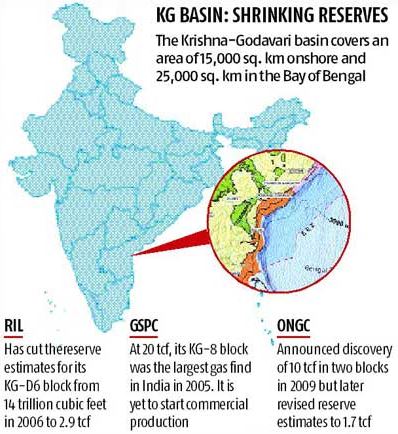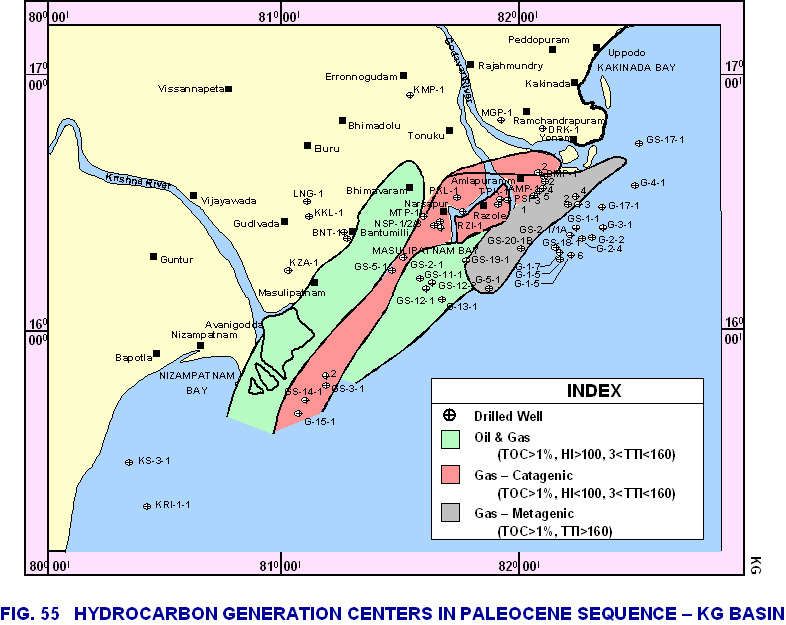We are a world in transition and for a smooth ride to better future, every one needs greater access to an efficient fuel.
Our basins have just not been reservoirs of water or minerals, they hold dearly even the drivers of energy. Krishna-Godavari basin proved this long back in 1983 with discovery of gas in its garb.
Not long time ago, Natural gas prospection was done in its R-cluster that is considered to be the deepest off-shore gas field in Asia.
The basin holds a proven petroliferous basin along the continental margin on the east coast of India covering an area of 15000 sq. km and an offshore of 25,000 sq. kms.
It is known to hold at least 5 km thick sediments with several cycles of deposition, dating back to Late Carboniferous till Pleistocene age.
Around 30 MMSCMD (million standard cubic metres per day) of natural gas can be derived from the basin fulfilling about 15% of India’s projected demand for natural gas by 2023.
This can significantly act as a catalyst to Energy security of India, important to eliminate one’s dependence on imports.
Alone ONGC, on February 15 2021 has announced to up-scale its gas production to 2 MMSCMD in June-end.
However, Krishna-Godavari basin is yet making another news these days. A joint inspection of Oil and Natural Gas Corp Ltd (ONGC) and GAIL Ltd units undertaken by NGT has flaunted severe environmental flaws in prioritized production and extraction of oil and gas done by these Companies.
Pollution mitigation measures have also not been found in place.
The inspection was done by following officers selected by NGT, Chennai from amongst: Union Ministry of Environment & Climate Change (MoEF&CC) Chennai; Central Pollution Control Board (CPCB) Chennai; the Andhra Pradesh Pollution Control Board (APPCB) collector, East Godavari and West Godavari Districts and an expert from Andhra University College of Engineering, Visakhapatnam.
The investigation was not Suo-moto and based on an application filed before NGT, Chennai. It alleged ONGC and GAIL to cause air, sound, soil and water pollution in Andhra Pradesh along the Krishna-Godavari (KG) basin located in East Godavari and West Godavari districts.
Findings suggesting harm to environment in KG basin:
An oil leakage in the pipelines by 3 units have supposedly caused damage to the agricultural land and water bodies in the surrounding area.
The reason for this leakage has been well illustrated in the report: NGT explains that the life period of coal tar enamel (CTE) pipes is ideally 20 years, but in KG basin, CTE pipelines older than 30 years have been in use throughout.
This indicates that there shall be a time frame for replacement of old pipelines while minimizing entrainment of sand in pipelines to reduce the chances of leakage.
This requires placement of gravel packs but only nine of the 20 flowing wells had gravel pack as required in case.
The report by green Committee has recommended that all three units polluting the basin area should pay an environmental compensation of Rs 170,812,500 to CPCB for violation of environmental norms.
Pollution measures disregarded with absolute intent to profit:
According to report by the Committee: “Effluent treatment plants were not properly operated, hazardous wastes such as ETP sludge, slop oil (crude oil emulsified with water and solid) was not disposed of as per Hazardous Waste and Management Rules.
High fugitive benzene emissions, not complying with APPCB consent for operation (CFO) conditions and coastal regulation zone violation with respect to marine disposal of treated effluent at Kesanapalli, East Godavari district.
ETP sludge was found dumped within the premises of Tatipaka gas collection station (GCS) and mini refinery, Rajamundry.
Oil spill inside the premises was not cleaned up, effluent was getting mixed with storm water, ambient benzene in the unit premises was very high and leak detection and repair (LDAR) had not been carried out.”
Untreated Hydrogen Sulphide and Mercury contamination found:
Natural gas produced in these units contain hydrogen sulphide (H2S) in concentration of 15-50 parts per million.
This gas has to be treated to less than 3 ppm before supply to GAIL Ltd so as to meet Petroleum and Natural Gas Regulatory Board guidelines of H2S concentration, according to the committee.
The committee has recommended to clear all the affected area where Mercury was found to be present in the range of 201 milligrams per kilogram suggesting “probable contamination with hazardous mercury”.
According to MOEFCC, “probably contaminated” qualifies for screening value of Mercury to be 50 mg for an identifying site.
India and its soaring needs:
According to Petroleum Ministry, India has 26 sedimentary basins, of which only seven possess the viability of commercial production of oil and gas. Of the total sedimentary area, 49% of total area is located on land, 12% in shallow water and 39% in the deep-water area.

These 7 basins are namely Krishna-Godavari (KG), Mumbai Offshore, Assam Shelf, Rajasthan, Cauvery, Assam-Arakan Fold Belt and Cambay.
For India that needs serious licensing of its valuable resources has a draft New Energy policy in line for Government’s nod. Strong institutions, fair and supportive regulations, and transparent pricing are needs of the hour.



